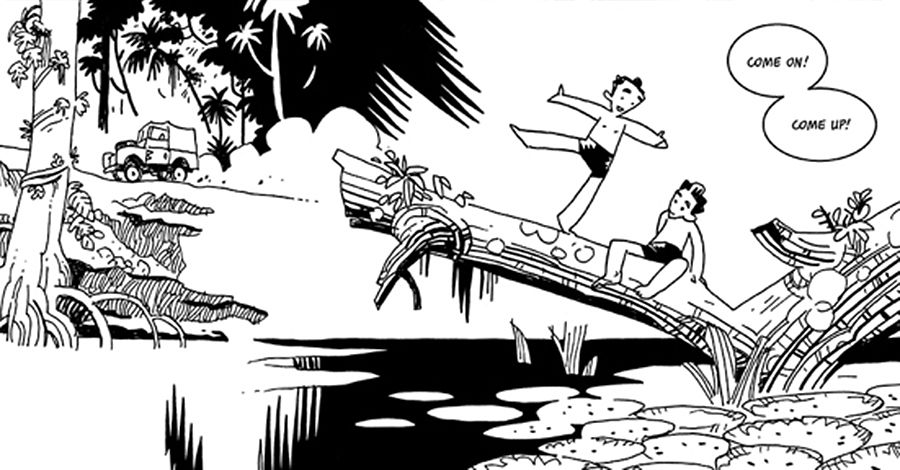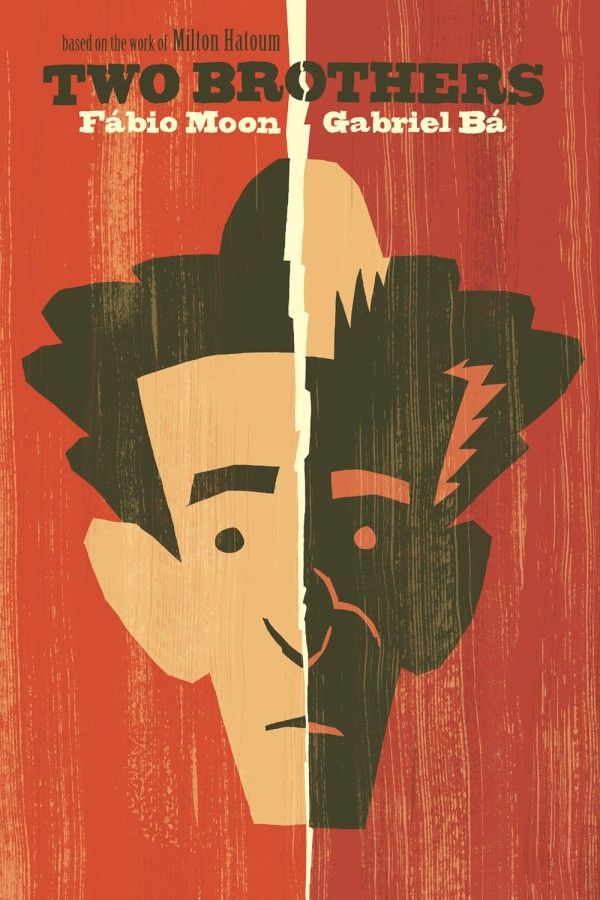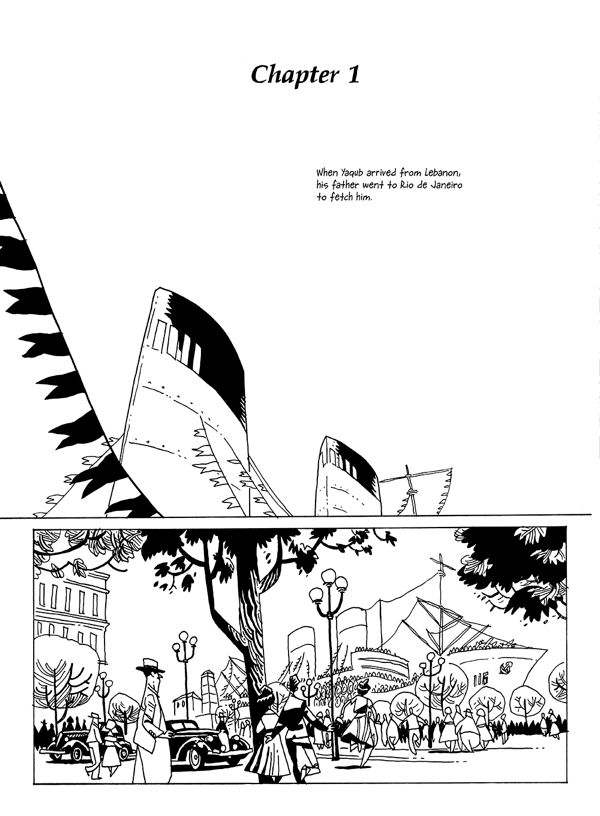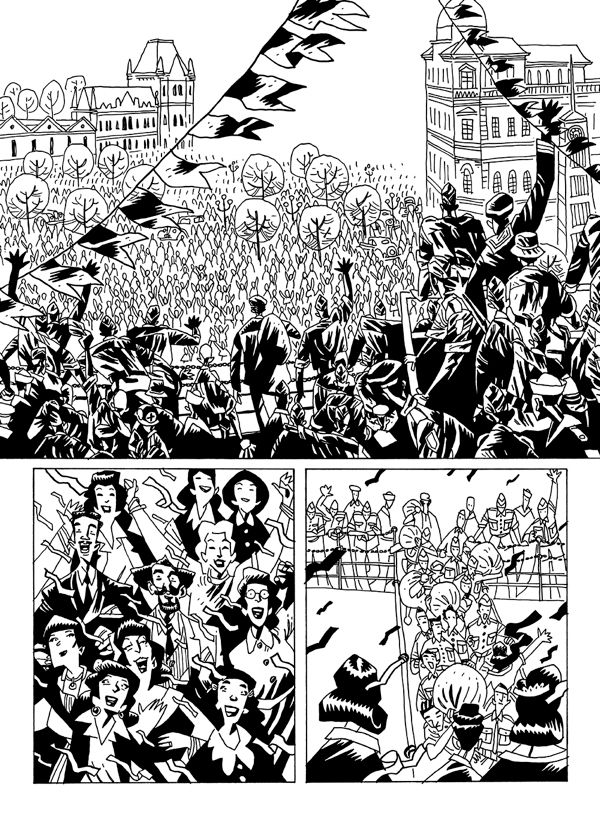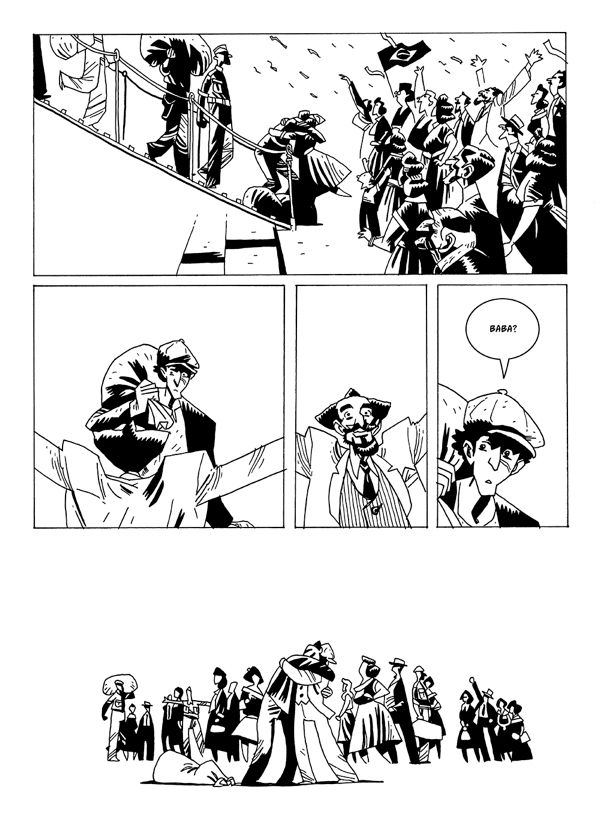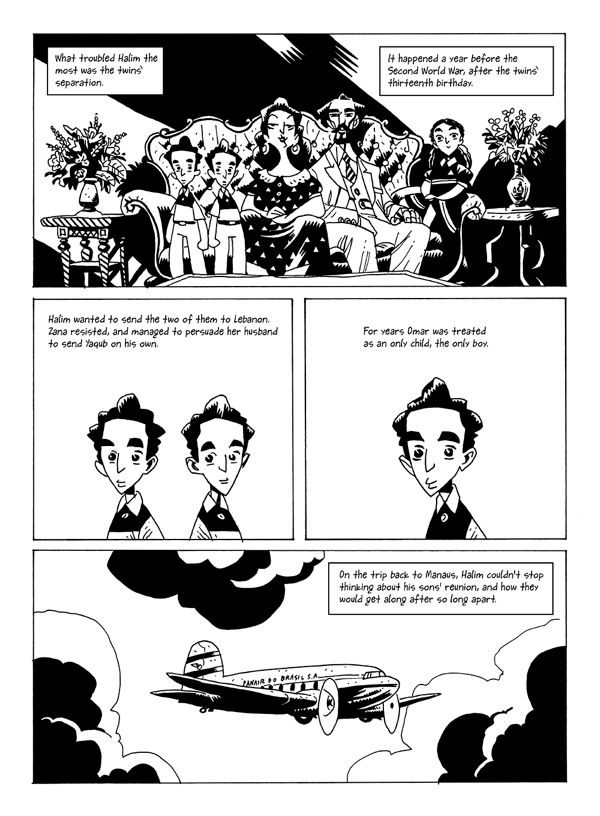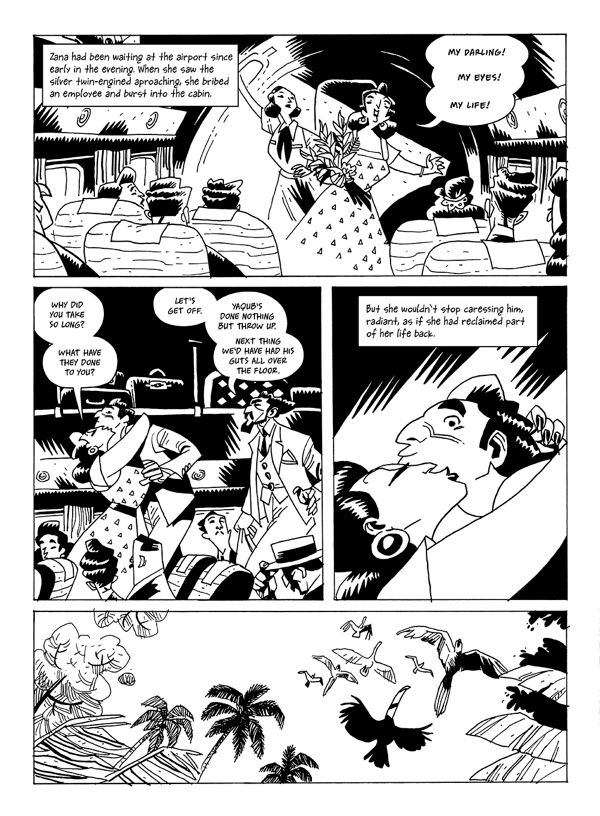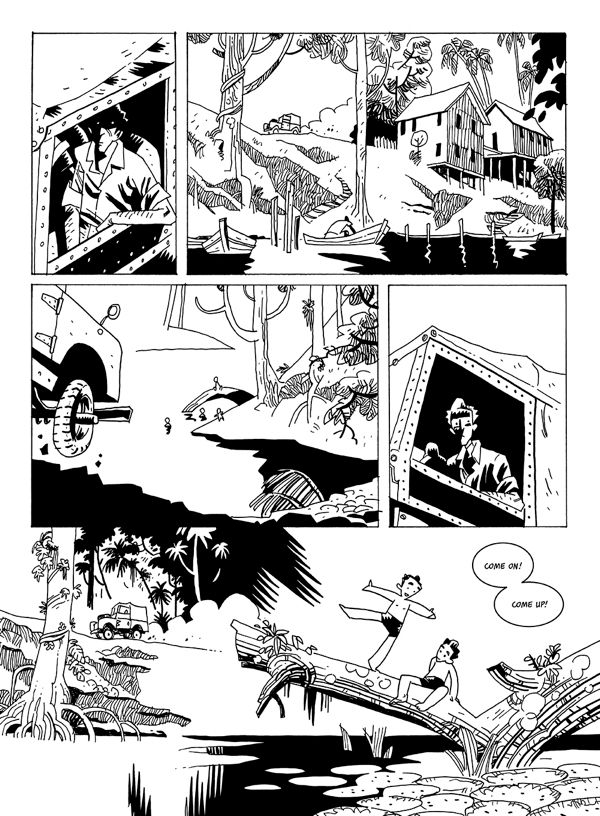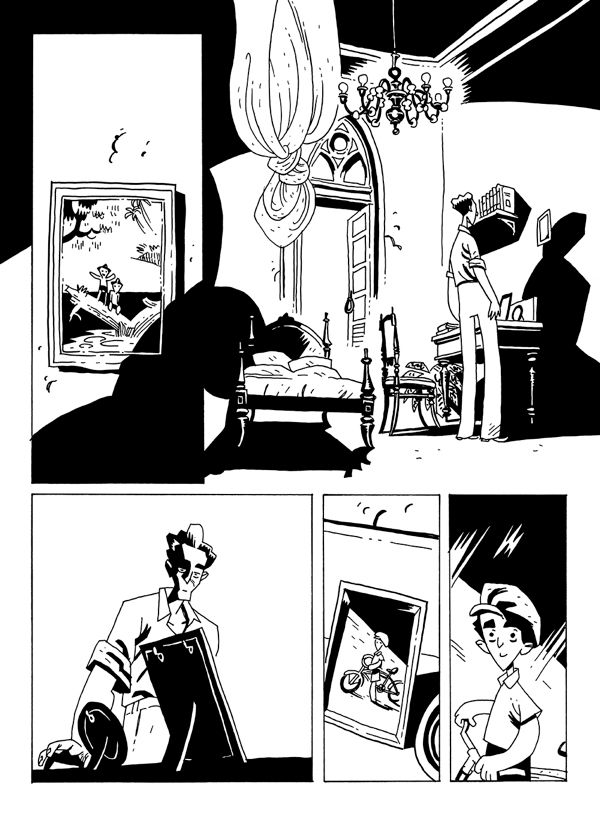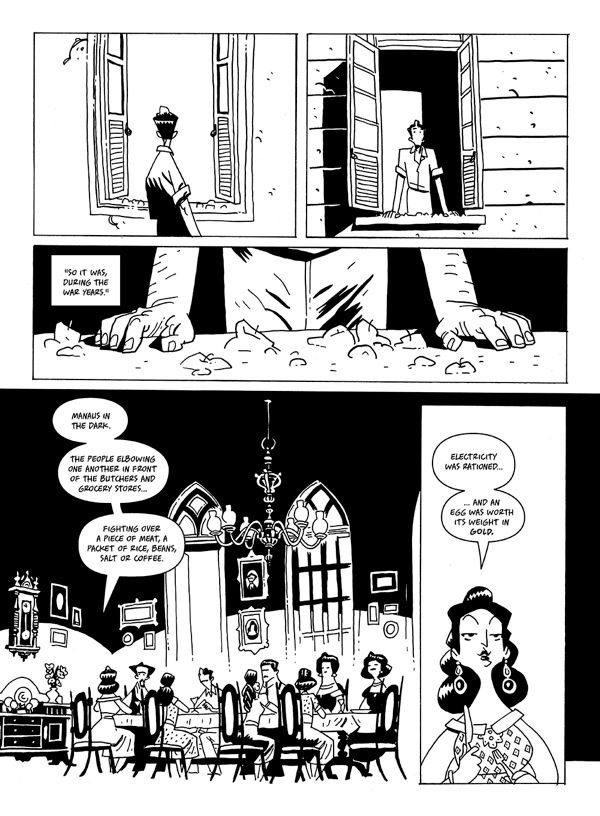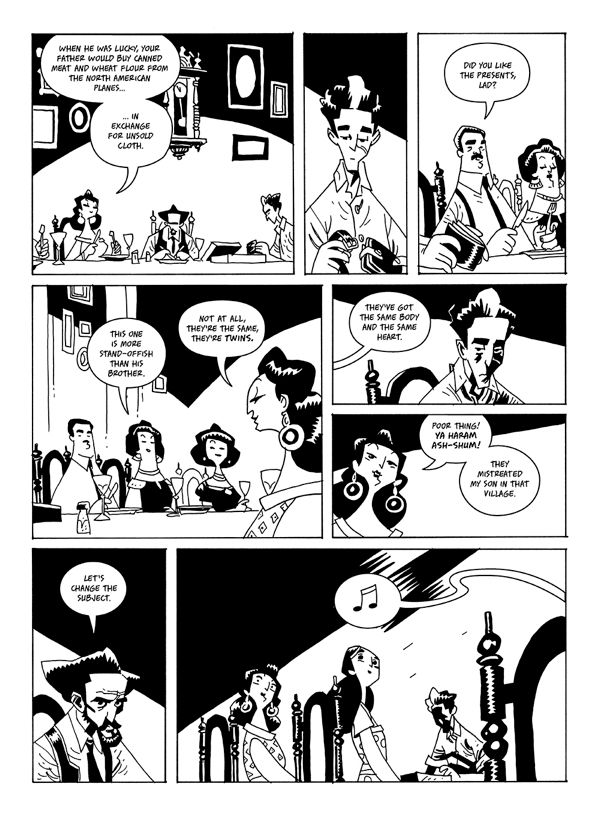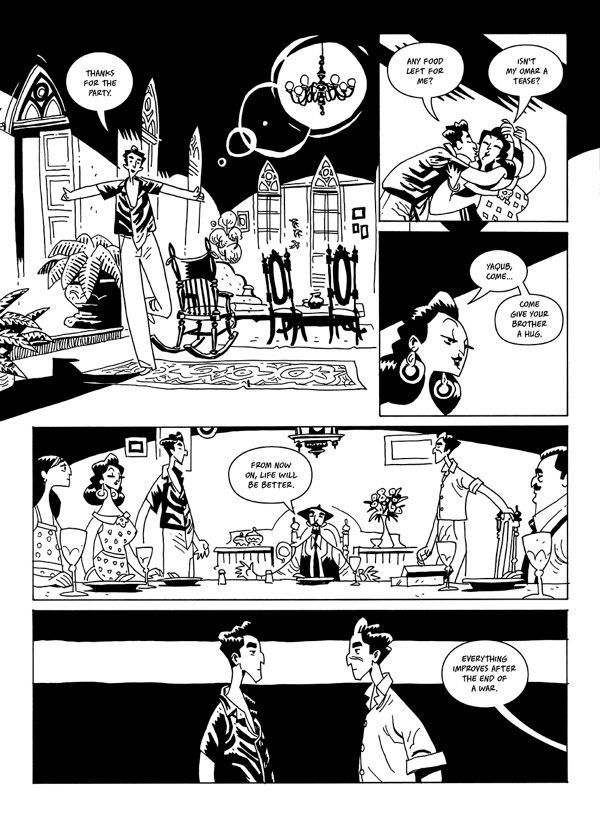Brazilian artists Gabriel Bá and Fábio Moon have always had a unique perspective on the American comics industry.
The duo started out in Brazil with self-published comics in the 1990s. They then moved into the American market, working with Dark Horse and Image and getting an Eisner nomination for their 2006 book "De:TALES," a collection of short stories about life in São Paulo. From there, they received acclaim for their work on "Casanova" and "Umbrella Academy," as well as "B.P.R.D.: 1947." The brothers won the Eisner Award for "Best Limited Series" in 2010 for "Daytripper," the trade paperback of which hit the New York Times' Best Sellers list.
Bá and Moon's latest project is an adaptation of Brazilian author Milton Hatoum's 2000 novel "The Brothers." The novel tells the story of twin brothers Yaqub and Omar, who choose very different paths in life and have a combative relationship to each other. The book also chronicles how their family and hometown change over the course of their lives.
The brothers took some time to talk with CBR News about adapting the novel into a comic titled "Two Brothers," being based in Brazil while working on American comics, and seeking out new challenges.
CBR News: The novel that "Two Brothers" adapts takes autobiographical elements from his life, as I understand it. And then, with you there's the obvious connection that it's about a set of twins from Brazil and you're a set of twins from Brazil. Were there any autobiographical elements that you incorporated into the story?
Fábio Moon: Yeah: we hate each other! No, seriously, I think our main advantage when working on this story was that we understood the characters that surround the twins, the way they behave, much more than the twins themselves. Because the twins are so opposite from us, but everybody else reacts to them in a way that's very familiar to us. Everybody expects twins to be the same person, so they expect twins to think alike and to agree on everything. If you tell one twin something, you immediately expect that the other twin already knows what you've said, because they have this connection.
Everybody has this impression of twins, we see it everywhere that people think we are the same person and have the same opinions, that we agree on everything. And so that was something in the book that we could work throughout the story with knowledge, and it was something that we wanted to emphasize, and it was one of the reasons that we chose to tell the story. It's right there in the beginning of the story. The mother is very old and the first question that she asks on her deathbed is, "Did my sons make peace?" Because she can't, throughout her entire life, she can't accept that they are different and that they have chosen different paths. And that is something that we really could talk about.
So, as separate people with different opinions, what is working together and collaborating like? What's your process for making comics?
Gabriel Bá: Well, we usually work on the scripts together because it's easier to talk about the story and make decisions together. Where the story's going, what we're going to do here, how we are going to change narration to dialogue and stuff like that. And then we usually have to choose only one of us to draw a story, because we have different art styles. Since Fábio had done the artwork for "Daytripper," we knew I would draw our next big project. That also helped in choosing this one, because I needed to like the story in order for us to do it.
We work face to face, on two drawing tables. So we are always in front of each other and always looking at each other's pages. And we know if the other is being lazy, or if he could do better. We are always the inner critic that artists have to have. And we are that, but in another person, for each other. So we are always saying those things that you already know in your head, and sometimes you ignore them, but we are always saying them out loud. Even though only one is drawing each story, the other is always giving an opinion, and talking about it, and looking at all of the process and pages.
When you look "Two Brothers," the first thing that jumps out is that it's entirely in black and white. What drove that decision?
Bá: Well, there were a lot of reasons. First of all, we love black and white. Some of the most influential comics that we've read are in black and white. And, we missed working in black and white. We started doing "Casanova," and after that "Umbrella Academy," and after that all the other comics we did, "Daytripper" and so on; we've always been working in color because it's more usual and people like it more in mainstream comics. But we missed making comics in black and white.
The second reason is, when you draw in black and white, you have to take more difficult choices artistically. It's a harder interpretation of the world, so it takes more effort from the artist and more commitment from the reader. We think it gives a deeper reading experience because the reader has to commit more to understand those images. And also, I think you can get a more poetic result because you can open up the panels a lot more. All of these reasons led us to do this book in black and white. And also, because there's not enough good black and white books out right now.
The story is intricately tied to the town where it takes place, Manaus, and the settings are very detailed. How did you go about researching locations for the story?
Moon: We spent a week in the city researching. After we started working on the book, we went to talk with [Milton Hatoum], the writer of the novel, so he could give us tips of what to look for when we went visiting the city. So when we went to Manaus, we walked around so that we could know the places that are still there, and what's changed, for different parts of the story. And he pointed us to people who are still living there who could help us around. It was good to have a sense of the dimensions and the size of the river compared to the city, and the city compared to the people. And then afterwards we did a lot of research with history books and on the Internet, to try to learn about how the city was in the beginning of the 20th century and throughout the 20th century, when the story takes places. Because that's one of the themes of the story: that the city changes so much, as well as the family.
Fraction Readies "Casanova" for its First Act Finale
Working with the author, research, and traveling were all parts of it, but when it comes to words and images on the page, how did you go about adapting the novel into this new format?
Bá: The style that the novel is written in, it's very much like memory. We thought that was going to be very hard to do in a comic book, but also a challenge, to try and keep that feel. We had to make it more focused. And a little more straightforward than the book, because it's boring to draw things that are mentioned instead of things that are happening there. We didn't want to draw people narrating stuff. So we had to choose, either you draw what they're talking about, or you draw them somewhere talking about it. That helped us choose the locations for the story, and which actions we were keeping and what we were taking out. Some characters, they were not really important to the main story, so we shortened their role in the story. It was a lot of work.
You mentioned that you were in touch with Milton Hatoum, who wrote the novel that you adapted, "The Brothers." What was it like working with him, and how did he feel about the adaptation?
Moon: He was completely ok with us doing the adaptation. He gave us all the liberty we wanted. If we had wanted to set the story in space, I think he would probably have been ok with that. He has no possessive pride over the story; after the story's done it's not his anymore, it belongs to the readers. So he didn't feel like he had to interfere in anything that we were doing.
He had read our previous comics, so he trusted us that we would do a good job. And so he gave us space. We also didn't go asking him a lot of stuff all the time. Because we didn't want to bother him, and we figured out that we had to find our own way to tell that story. We asked him traveling questions, and when we did the first sketches of the characters we went to show him. But besides that, we tried to figure out how to make it work ourselves so the final book would also have our style, so it wouldn't only feel like an illustrated version of his story.
Are you also working on other projects simultaneously? "Casanova" is still ongoing, and there are rumors that another "Umbrella Academy" series is in the works. Those are both so tonally different from "Two Brothers." How do you change gears between those different projects?
Moon: Sometimes we just have to focus. We spent four years working on "Two Brothers." The first two years we were working on the script. Then, the last two years we were finishing the script but also started drawing, because only working on the script was driving us crazy. And so for the last two years -- at least for the last year and a half -- we stopped doing anything else so we could focus on the book. Especially Gabriel, who was drawing -- he stopped doing everything else so he could work on the art. The artwork in the book is the most different mindset that we had to get into. But after the book was on its way and he got some rhythm, we could start working on new stuff again. Since I'm drawing this new "Casanova," after we were done with the script for "Two Brothers," I could start thinking about new stories and I could start drawing new issues of "Casanova" with [writer] Matt [Fraction].
Gerard Way posts update, concept art for new "Umbrella Academy"
We try to plan it so that we don't have to work on so many things at the same time, but it never works. It hasn't worked that well so far; it's ended up that one thing starts when the other is not yet finished. So, Gabriel will probably start on "Umbrella Academy" before we finish the current "Casanova" arc, and before we finish those two we will probably start working on something else. Maybe when we are really old, we can do one project at a time. But so far, we've been failing at doing just one. And we definitely prefer to have a lot of things than to have nothing.
In terms of publication, the last book that you did that was just the two of you, "Daytripper," was an original story, published by Vertigo in monthly issues. This is an adaptation, published in one volume by Dark Horse. Why is this project so different?
Bá: We can't just repeat the same things over and over again. We always try. We know the advantages of working on a series, that you can build your character, build your story, and that helps in writing new stories, new issues. And we saw that when we did "Daytripper" because every new issue was easier to write, it was almost writing itself because it was part of a bigger story. But after we were done, we wanted to do something else. We always want to do something else, because we really think there's more to be done in comics that's not being done.
It's definitely easier to repeat formulas, or go to what's working, than to try something new, but we are stupid. We always want to try something new. And we love challenges. Adapting this book was a big challenge because it's a big book, a complex story. It deals with relationships, which is what we like to talk about in our stories, but it's so different from "Daytripper." Doing new things is really what drives us and challenges us. That's what drove us to do "Casanova," which is really different from our own stories. It drove us to "Umbrella Academy," which is totally different. We worked with Mike Mignola because we were huge fans and it's a different genre, you know -- "B.P.R.D." is horror and mystery, and that's a challenge in itself. So that's always the reason: it's challenges.
Moon: There is so much that can be done in comics, that sometimes we try not to think of the shape the story's going to come out and try to focus on which stories are worth telling, and what's exciting for us to turn into comic books. And then afterwards we try to think, "How is the best way to tell this story?" In the case of "Two Brothers," we thought about if we could make it work as a series, and we thought about which publisher would be best. We talked with a lot of publishers about the book, because we were doing this book for the Brazilian market during four years, so we had a lot of time to talk about the book with different publishers. But in the end, the story needed to be told in one chunk, in one big book. And if that's the case, then let's focus on making that work.
I think that's one of the... I don't think it's an advantage, but it's a characteristic, of us being here in Brazil. We're kind of distant from the American market, so we think more about the story than the format and the market aspect of the story. We are not so into the machine of the monthly comic. We meet with the editors like once a year. We just focus on trying to be excited about the stories and trying to make people excited about what we have coming out.
"Two Brothers" comes out in America in October, but the Brazilian and French editions already came out, and you even did book tours in both countries.
Bá: Yeah, we went to the Salon du Livre in Paris, France, and afterwards we visited five cities for bookstore signings. It was really great. The French market is totally different from the American one, and from the Brazilian one, so we are learning a lot through publishing comics there. And then here in Brazil, we've visited a lot of cities. We went back to Manaus, the city where the story takes place, to do a release there. It was great. It was in a public square, full of people. It was amazing. And it's good to travel: it takes us away from the drawing table. Our monthly comics are all late because of all the traveling we've been doing. But it's worth it. It's worth it to meet the readers and talk about the book. We love what we do, and we love talking about it. But sometimes I feel guilty because our comics for the machine of monthly comics are late.
It's been weird, waiting for the book to come out in the US, because ever since it got announced, everyone has been curious about it. But they'll just have to wait until October. Right now, we are finishing the design and production of the American edition. We are very anxious to see it published as well.
"Two Brothers" will be available on October 27 from Dark Horse Comics.

